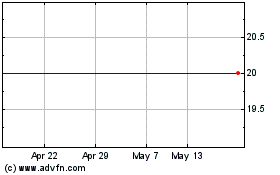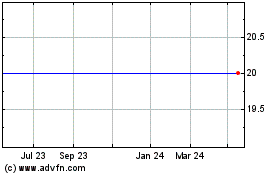Stmnt re Blood Safety
November 14 2000 - 9:44AM
UK Regulatory
RNS Number:9884T
Pall Corporation
13 November 2000
For more information Contact
Patrice Radowitz, Media, Pall Corporation
516-484-3600, ext 6111
Diane Foster, Investor Relations, Pall Corporation
516-484-3600, ext 6109
BLOOD SAFETY INNOVATIONS ANNOUNCED BY PALL AT AMERICAN
ASSOCIATION OF BLOOD BANKS ANNUAL MEETING
A New Era in Blood Safety Rapidly Approaches
Washington DC ---- (November 3, 2000) -- Blood transfusion leaders reviewed the
latest developments on new technologies designed to improve blood transfusion
safety at the symposium Leading Edge Technologies--Advancing Blood Safety
Worldwide, at the American Association of Blood Banks (AABB) annual meeting.
Panelists spoke on state-of-the-art blood safety measures from the rapid
adoption of universal leukocyte (white blood cell) filtration around the globe
to the newest developments in detection of bacterial contamination of platelets
and revolutionary pathogen inactivation technology to prevent transfusion
transmission of viruses, bacteria and protozoa. "We are at the center of a
medical revolution in blood safety," said Eric Krasnoff, Chairman and CEO of
Pall Corporation (NYSE: PLL), which hosted the meeting. "We are proud to be on
the leading edge of developments that will help bring an improved standard of
care to everyone who needs a blood transfusion."
Paul M. Ness, MD, Director of Transfusion Medicine at Johns Hopkins Medical
Institutions and President of AABB, noted that the shift to this new
generation of blood components is challenging the transfusion medicine
specialists' ability to provide the highest quality care, especially in a
financially constrained health care environment.
The role of the transfusion medicine specialist must change from gatekeeper to
an aggressive patient advocate for improved patient care," he stated. "Unlike
medical conditions, such as AIDS and hemophilia, which have a strong physician
and patient advocacy to ensure that the latest innovations are made available to
all patients, transfusion recipients do not have an obvious champion." Dr. Ness
added, "We must fulfill our primary medical responsibility of providing the best
and safest transfusion care for our patients without being eclipsed by cost
reimbursement or legal issues."
"Mark Brecher, MD, Professor of Pathology and Laboratory Medicine at the
University of North Carolina (UNC) and Director of Transplantation and
Transfusion Service at McLendon Laboratories UNC Hospitals, spoke on the need
for new technology to combat bacterial contamination of blood products, the
greatest infection threat in transfusion medicine today. The incidence of
platelet bacterial contamination is about 1 in 2,000 units and severe morbidity
or death may occur in as many as 150 cases per year in the U.S. This is a
persistent but often overlooked problem because it is commonly under recognized
and underreported.
The key concern, according to Dr. Brecher, is to identify a method with enough
sensitivity to detect bacterial contamination of platelets in the shortest
period of time. Unlike most viruses, which can be detected at the time of
donation, bacteria frequently require time to proliferate during storage before
they can be detected.
If we could achieve a highly sensitive system that detects a majority of the
organisms by day 3 storage, it might also enable us to extend the shelf life of
platelets from 5 to 7 days," Dr. Brecher said. "By extending shelf life, we will
be able to reduce the outdating of platelet inventories, use this limited
medical resource more efficiently and save lives."
Jerry Ortolano, Ph.D., VP Scientific and Laboratory Services, Pall Corporation,
affirmed Dr. Brecher's presentation in an overview of several new and innovative
approaches Pall Corp. is undertaking to detect bacterial contamination of
transfused platelets. Diagnostic systems are being developed using 02 levels in
the test sample as a surrogate marker for the presence of bacteria. The systems
use a specially designed filter that reduces white blood cells and platelets but
allows plasma and bacteria to be transmitted into a sample pouch. The closed
system device is able to detect whether or not the platelets are contaminated.
One of the systems being developed measures the 02 change in the headspace
(airspace) of the sample pouch to indicate the presence of bacteria.
Another system stemming from this technology platform also under development
uses the fundamental principle of reduction oxidation (redox) combined with
microelectronics. As the 02 rate of change exceeds a predetermined threshold, a
microchip sends a signal illuminating a red light on the device indicating the
presence of bacteria establishing that these platelets should not be transfused.
Conversely, if the 02 rate of change remains below the predetermined threshold,
the microchip sends a signal illuminating a green light confirming that the
platelets are suitable for transfusion.
Dr. Ortolano concluded by stating, "We believe this approach will result in
highly sensitive, rapid detection of bacterial contamination of platelets in a
closed processing device that can be easily integrated into hospital blood
banking systems."
INACTINE (TM) Pathogen Inactivation Technology, a revolutionary technology with
the potential to safeguard the blood supply from bacterial and viral
contaminants including known viruses, such as HIV and hepatitis C, and emerging
pathogens was the focus of the presentation by John Chapman, Ph.D., VP, Blood
Products Research, V.I. Technologies, Inc. (VITEX) (Nasdaq: VITX). INACTINE (TM)
Pathogen Inactivation Technology, the result of a collaborative effort between
VITEX and Pall Corporation, recently received approval to commence a Phase 11
clinical trial. The study is a randomized, controlled, parallel-group evaluation
of the safety and maximum storage time of a unit of INACTINE (TM) treated red
blood cells when administered to normal adult subjects. The storage time is
determined by the in vivo survival of the unit of INACTINE (TM) treated red
blood cells relative to a control red blood cell unit. The novel INACTINE (TM)
Pathogen Inactivation Compound is designed to inactivate viruses, bacteria and
protozoa by disrupting the replication of the nucleic acid without diminishing
the therapeutic value of red cells.
Dr. Chapman presented the results of studies that investigated the survival of
red blood cells treated with INACTINE (TM) Pathogen Inactivation Compound. The
in vitro data showed the INACTINE (TM) Compound's ability to inactivate a broad
spectrum of viruses (enveloped and non-enveloped) and bacteria that account for
a majority of transfusion associated infections.
"In preclinical in vitro laboratory tests with red blood cells, the INACTINE
(TM) Compound has been shown to have an inactivation effect on a broad spectrum
of pathogens while preserving the quality and oxygen-carrying function of the
red blood cells. Further, animal studies have shown that the INACTINE (TM)
treated red cells are well tolerated," Dr. Chapman said. Phase 1 clinical trial
results in humans will be released in December at the American Society of
Hematology meeting.
Graham Sher, MD, VP Medical, Scientific, Clinical Management for Canadian Blood
Services reviewed Canada's experience as the first and only country in North
America to mandate universal leukocyte reduction. Canada is one of ten nations
around the world implementing routine blood filtration as a standard of care for
all patients. He explained that donor white blood cells are responsible for a
majority of transfusion reaction complications. Pall blood filters can reduce
donor white blood cells from transfused blood, improve patient outcomes, shorten
hospital stays and lower health care costs. Dr. Sher stated, "Universal
leukocyte reduction is an important component of our commitment to provide
Canadians with safe, secure and reliable blood components and blood products."
In concluding remarks, Barry Wenz, MD, Executive Medical Director at Pall Corp.
and symposium moderator, stated, "Pall is moving full-speed ahead with these
initiatives that have placed us on the forefront of blood safety from our
leadership in blood filtration, and our ongoing efforts in bacterial detection
and pathogen inactivation technology to ensure an even safer blood transfusion
for all people around the world."
Editors Note: Pall is the acknowledged technology leader in the increasingly
complex and demanding filtration industry and has been for more than 50 years.
Pall serves customers throughout the health care and industrial marketplace. In
addition to providing leading-edge products for transfusion medicine, Pall is a
primary supplier to the biopharmaceuticals, semiconductor, and municipal
drinking water industries, to name a few.
Pall blood filters are used in all ten countries that have mandated universal
leukocyte reduction and in the 13 countries, including the US, that are moving
toward routine blood filtration. In addition to co-developing INACTINE (TM)
Pathogen Inactivation, Pall will be the exclusive marketer of the INACTINE (TM)
product for both red cells and platelets. Pall is also involved in extensive
research and development in many other areas of blood safety including devices
designed for sensitive and early detection of bacterial contamination of
platelets, considered to be one of the greatest transfusion risks today.
Pall (NYSE: PLL) has annual sales of over $1 billion. The Company is
headquartered in East Hills, New York and has operations in over 30 countries.
Further information can be found at http://www.pall.com. Pall is the
acknowledged technology leader in the increasingly complex and demanding
filtration industry and has been for more than 50 years. The Company serves more
markets with more proprietary products than any other company in the $31 billion
filtration industry. With annual sales over $1 billion, Pall Corporation is
based in East Hills, New York, USA and operates directly in 30 countries. The
Company's shares are listed on the New York Stock Exchange (PLL). Further
information is available on the Company's web site at http://www.pall.com.
Equatorial Palm Oil (LSE:PAL)
Historical Stock Chart
From Jun 2024 to Jul 2024

Equatorial Palm Oil (LSE:PAL)
Historical Stock Chart
From Jul 2023 to Jul 2024
